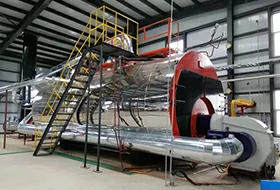
Oct . 18, 2024 12:16 Back to list
Innovative Approaches to Steam Engine Boiler Design for Enhanced Efficiency and Performance
Understanding Steam Engine Boiler Design
Steam engines have been instrumental in the advancement of technology, serving as a driving force during the Industrial Revolution. A critical component of these engines is the boiler, which generates steam by heating water. The design of a steam engine boiler is paramount, influencing efficiency, safety, and operational performance. This article delves into the principles of steam engine boiler design, covering various types, materials, and key engineering considerations.
Types of Steam Engine Boilers
There are several types of steam boilers, each designed for specific applications. The two primary categories are fire-tube boilers and water-tube boilers.
1. Fire-tube Boilers In this design, hot gases from combustion pass through tubes that are surrounded by water. This setup is relatively simpler, making it easier to manufacture and maintain. Fire-tube boilers are often used in small-scale applications due to their effectiveness at producing steam quickly and efficiently. However, they are limited in terms of pressure capability and efficiency compared to their water-tube counterparts.
2. Water-tube Boilers Conversely, in water-tube boilers, water circulates through tubes heated by combustion gases. This design allows for higher pressure capabilities and greater efficiency, making them suitable for large-scale industrial applications. Water-tube boilers also facilitate rapid steam production and better steam quality, which is essential for large steam engines.
Materials Used in Boiler Construction
The materials used in boiler construction are critical for safety and efficiency. Most modern boilers are constructed from carbon steel or alloy steel, which can withstand high temperatures and pressures. The inner surfaces of the boiler must resist corrosion due to constant exposure to steam and water. As a result, manufacturers often apply protective coatings or use materials with high corrosion resistance, such as stainless steel.
Another important material consideration is insulation. Proper insulation reduces heat loss, improves efficiency, and enhances safety by keeping outer surfaces cooler. Insulation materials must withstand high temperatures and minimize thermal bridging.
steam engine boiler design

Key Engineering Considerations
When designing a steam engine boiler, several key engineering considerations must be addressed
1. Pressure and Temperature Ratings The boiler design must accommodate the expected operating pressure and temperature. Safety valves are essential components that prevent overpressure scenarios by releasing excess steam.
2. Heat Exchange Efficiency The design should optimize heat transfer between the combustion gases and the water. This can be achieved through the strategic arrangement of tubes and the use of heat exchangers, which maximize the surface area for heat transfer.
3. Water Treatment The quality of the water used in the boiler impacts its performance and lifespan. Proper treatment is necessary to prevent scaling and corrosion. It may include the use of chemicals to manage pH levels and the removal of impurities.
4. Safety Features Modern boilers include a variety of safety mechanisms, such as alarms, shut-off valves, and automatic controls, to ensure safe operation. Regular maintenance and inspections are also crucial to identify and rectify potential issues before they become emergencies.
5. Emission Control With increasing environmental regulations, boiler design must also account for emissions. This involves incorporating technologies such as flue gas treatment systems to reduce pollutants released into the atmosphere.
Conclusion
Steam engine boiler design is a complex yet essential aspect of steam engine technology. Understanding the different types of boilers, materials used, and critical engineering considerations is vital for creating efficient, safe, and reliable steam generation systems. As industries continue to innovate and prioritize sustainability, the design and operation of steam boilers must evolve to meet these new challenges while maintaining the legacy of steam power. The significance of well-designed steam boilers will continue to endure in various applications, from power generation to industrial processes, illustrating the timeless nature of steam technology in our modern world.
-
High-Efficiency Commercial Oil Fired Steam Boiler for Industry
NewsJul.30,2025
-
High-Efficiency Biomass Fired Thermal Oil Boiler Solutions
NewsJul.30,2025
-
High Efficiency Gas Fired Thermal Oil Boiler for Industrial Heating
NewsJul.29,2025
-
High-Efficiency Gas Fired Hot Water Boiler for Sale – Reliable & Affordable
NewsJul.29,2025
-
High Efficiency Biomass Fired Hot Water Boiler for Industrial and Commercial Use
NewsJul.29,2025
-
High-Efficiency Biomass Fired Hot Water Boiler for Industrial Use
NewsJul.28,2025
Related PRODUCTS






















